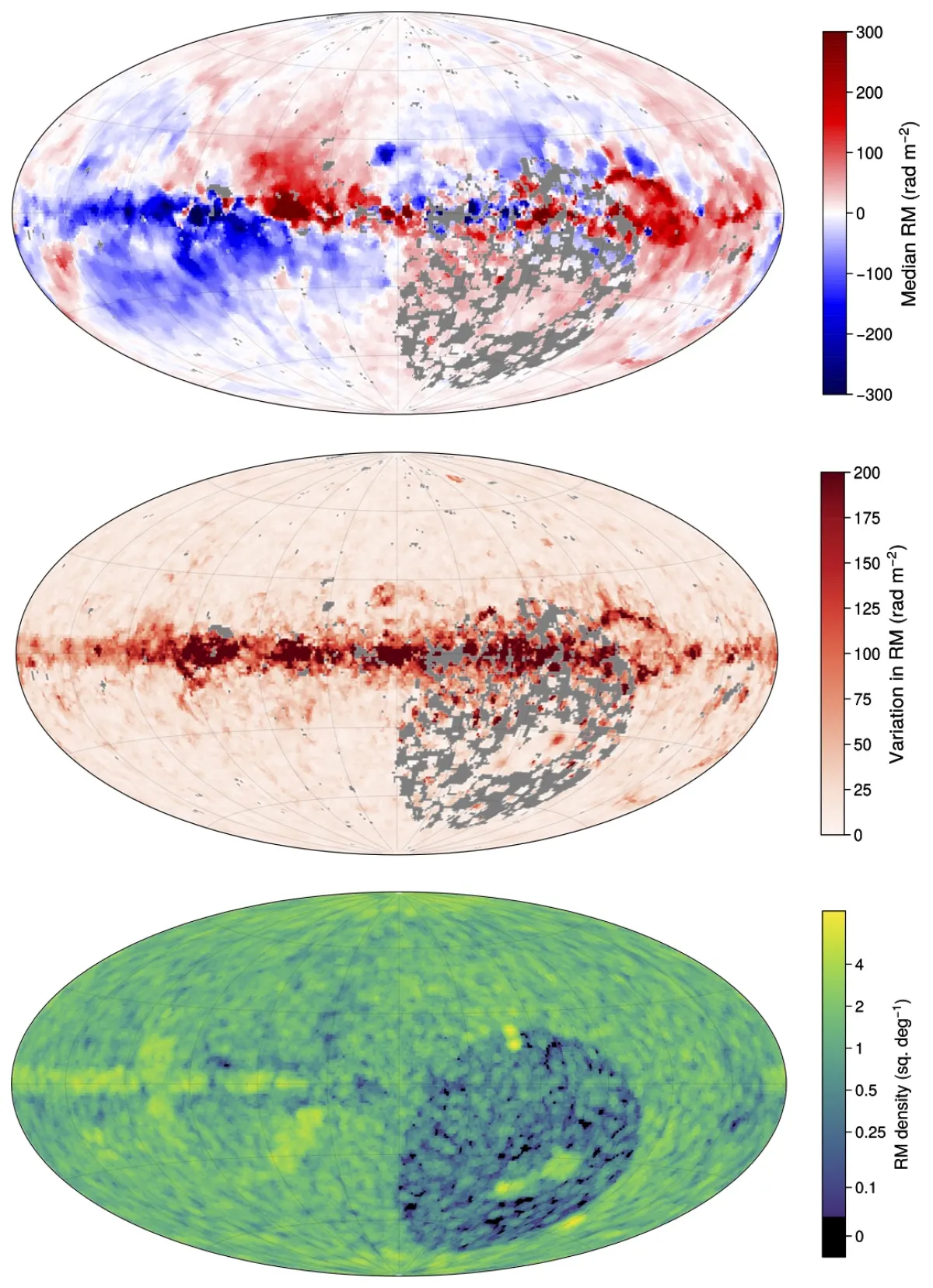Exploring Galactic magnetism through radio polarization
Magnetic fields are present throughout the universe on all scales: from planets and stars, star-forming clusters and spiral arms, entire galaxies, to galaxy clusters and cosmic filaments.
Research themes
Project status
Content navigation
About

Magnetic fields are present throughout the universe on all scales: from planets and stars, star-forming clusters and spiral arms, entire galaxies, to galaxy clusters and cosmic filaments. Measurements of magnetic fields in astrophysical environments rely on a small number of physical processes where the magnetic field imprints some signature into the light we observe. Most of these processes involve the polarization of light, allowing us to measure the polarization to gain (often indirect) information about the magnetic field either in the environment producing the light or the medium the light passes through.
Measurements of radio polarization are the most sensitive probes of magnetism in low-density, diffuse environments, such as the interstellar medium or the intra-(galactic-)cluster medium. With such measurements, we can explore magnetism in the 'quiet' parts of the universe. The common theme in all of my projects is that they involve radio polarization and Faraday rotation.
I have several project ideas covering a range of skill/experience levels and a range of sub-specializations: observational, statistical analysis, computational/simulations, algorithm/software development, and more. Interested students are encouraged to contact me to discuss specific projects that fit their specialization preferences.

